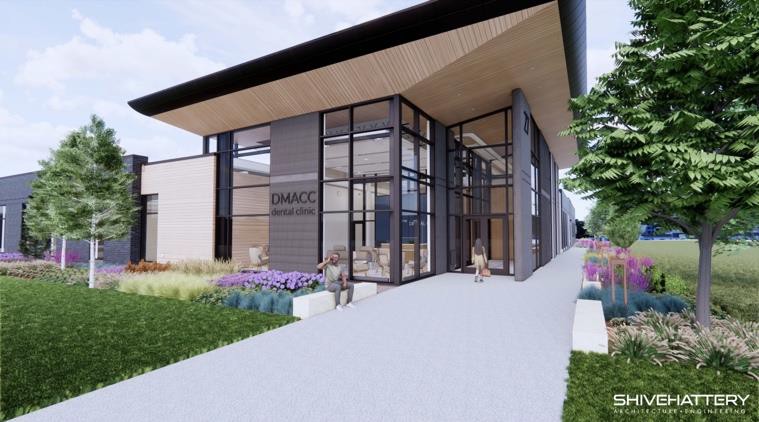Program takes new look at health-care efficiency

Sometimes, just having someone else look at a problem can provide a whole new perspective – particularly if that person has an engineering degree.
That’s what health-care professionals at Iowa Methodist Medical Center are finding, as Iowa Health – Des Moines’ process improvement department, launched in 2009, begins to generate results.
Valerie Boelman, an industrial engineer with a degree from Iowa State University, leads a four-person department that focuses on applying engineering-based process improvement principles to health-care settings. For the past two years, her staff has worked with teams of ISU industrial engineering students to perform studies of processes within several departments of Iowa Health’s hospitals.
“It’s the same kind of study I would do if I was in a factory and had three pieces of equipment and I had to figure out howto lay them out to make the factory more efficient,” said Boelman, who before joining Iowa Health had worked for a packaging company and a window manufacturer. “So it’s kind of fun for me to see how those skills that they learn in industrial and system engineering, they can apply in health care. Because really, everything is a process.”
For example, one student team studied several areas of Iowa Methodist’s pharmacy department, which distributes thousands of types of medications and supplies throughout the hospital.
“The goal was to reduce the walk time for pharmacy staff,” Boelman said. “So they studied all the different elements of the pharmacy and where the pharmacists and pharmacy techs are walking, and how could they shrink the time in their walks. So they made some changes from a short-term perspective, and also made a long-term plan that if there was time to move a lot of things, here’s what you should do.”
One of the areas in which short-term recommendations were implemented was the pharmacy’s receiving area, a small room in which staff members organize incoming drugs and supplies.
“We needed more room to be able to receive the order and then put it away,” said Nancy Dickerson, Iowa Methodist’s pharmacy procurement coordinator. The engineering students assisted Dickerson’s staff in organizing the area to make the work flow more efficient. For instance, staff members who bring in bins of supplies now place them within a rectangle marked with tape on the floor so they don’t inadvertently block carts that need to pass through the aisle.
“It was a way for someone to come in and look at something you see every day and provide a different viewpoint on how you can do something,” Dickerson said. “They were really helpful, and we really enjoyed working with them. They were very willing to listen to our viewpoints.”
Each student team is asked to estimate the potential dollar savings of their recommendations. In the past semester, the students estimated that total improvements costing $42,000 would generate $322,000 in productivity savings per year, Boelman said. “I caution them because there are some things that are important that are not necessarily hard dollars,” she said. “:If you can make a patient’s experience better, sometimes that’s not really dollar savings.”
The program led to an alternate career path for Vanessa Calderon, who as an ISU industrial engineering student completed her senior design project at Iowa Methodist in the fall of 2009. Iowa Health hired her in July as a process improvement analyst.
“I was looking at a lot of different places to work,” said Calderon, whose job search began with manufacturing companies such as Caterpillar Inc. “I didn’t realize how much I would enjoy working in health care.”
When she attended a career fair in Cedar Rapids, St. Luke Hospital, an affiliate ofIowa Health System, Iowa Health – Des Moines’ parent organization, had an opening for a process improvement specialist. “That’s when I decided to apply for health-care jobs,” she said, which led to the Des Moines position.
Her student team had focused on improving patient turnaround times for the operating rooms. Now, one of her responsibilities is implementing the recommendations from that study, such as procedures to reduce the time the operating room nurses spend tracking down patient information on the telephone. “So it’s interesting that some of the foundations of what I’m doing now were what I was doing as a student.”
Calderon is also helping organize a kaizen event for the hospital aimed at reducing the rate of patient readmissions to the hospital within 30 days of discharge. Originally, kaizen was a philosophy of continuous improvement that emerged in Japan following World War II, but the term is now used to refer to “kaizen blitz” events in which a group is formed to address quality issues.
When such an event is done at a factory, it might take an entire workweek, but at the hospital, the process is shortened to one day, she noted. “Then we give people about 30 days to finish up their items, then come back and see how those implementations went,” she said.
From Calderon’s perspective, the program is clearly a success from the standpoint of job satisfaction.
“It’s a privilege to work here, really,” she said. “It’s nice to be around people who really want to make things better.”









